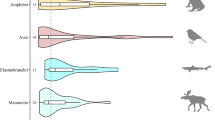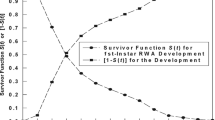Abstract
BIOLOGISTS have often calculated the vast numbers which would be reached in a relatively short period by the descendants of a single pair of insects or other fecund animals if all of them reproduced at the normal rate before dying. Such calculations are used to illustrate the high potential rates of population increase, or the severity of the natural checks to increase, or to show the very high mortality required to keep a fecund population within normal limits. It should, of course, be recognized that, in many cases, reductions in the rates of reproduction and development also play an important part in limiting increase. However, the purpose of this note is to direct attention to the fact that, in certain calculations of the 'necessary mortality' , there is a striking fallacy.
This is a preview of subscription content, access via your institution
Access options
Subscribe to this journal
Receive 51 print issues and online access
$199.00 per year
only $3.90 per issue
Buy this article
- Purchase on Springer Link
- Instant access to full article PDF
Prices may be subject to local taxes which are calculated during checkout
Similar content being viewed by others
References
Payne, N. M., Ecol. Mon., 4, 1 (1934).
Bremer, H., Z. angew. Entom., 14, 254 (1929).
Blunck, H., Z. Pflanzenbr., 39, 1 (1929).
Uvarov, B. P., Trans. Ent. Soc. Lond., 79, 1 (1931).
Author information
Authors and Affiliations
Rights and permissions
About this article
Cite this article
SOLOMON, M. Mortality Required to Prevent Population Increase. Nature 159, 848–849 (1947). https://doi.org/10.1038/159848b0
Issue Date:
DOI: https://doi.org/10.1038/159848b0
This article is cited by
-
Moral ethics v. tax ethics: The case of transfer pricing among multinational corporations
Journal of Business Ethics (1992)
Comments
By submitting a comment you agree to abide by our Terms and Community Guidelines. If you find something abusive or that does not comply with our terms or guidelines please flag it as inappropriate.



